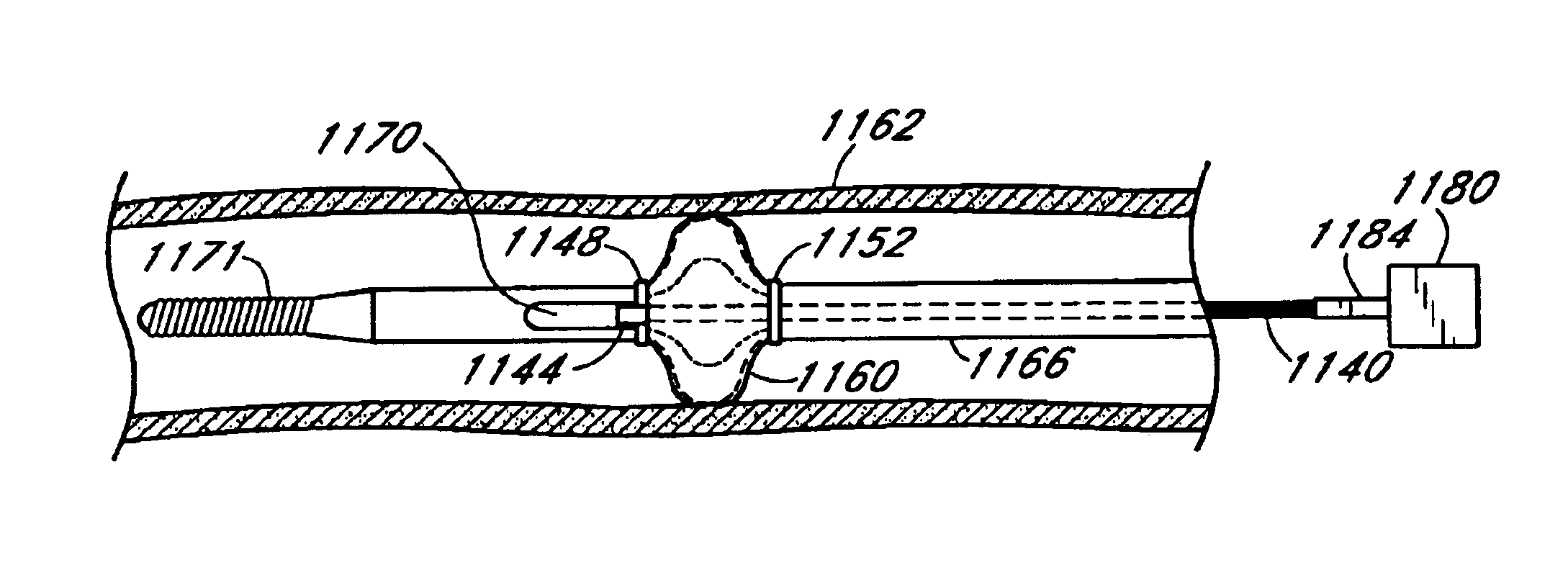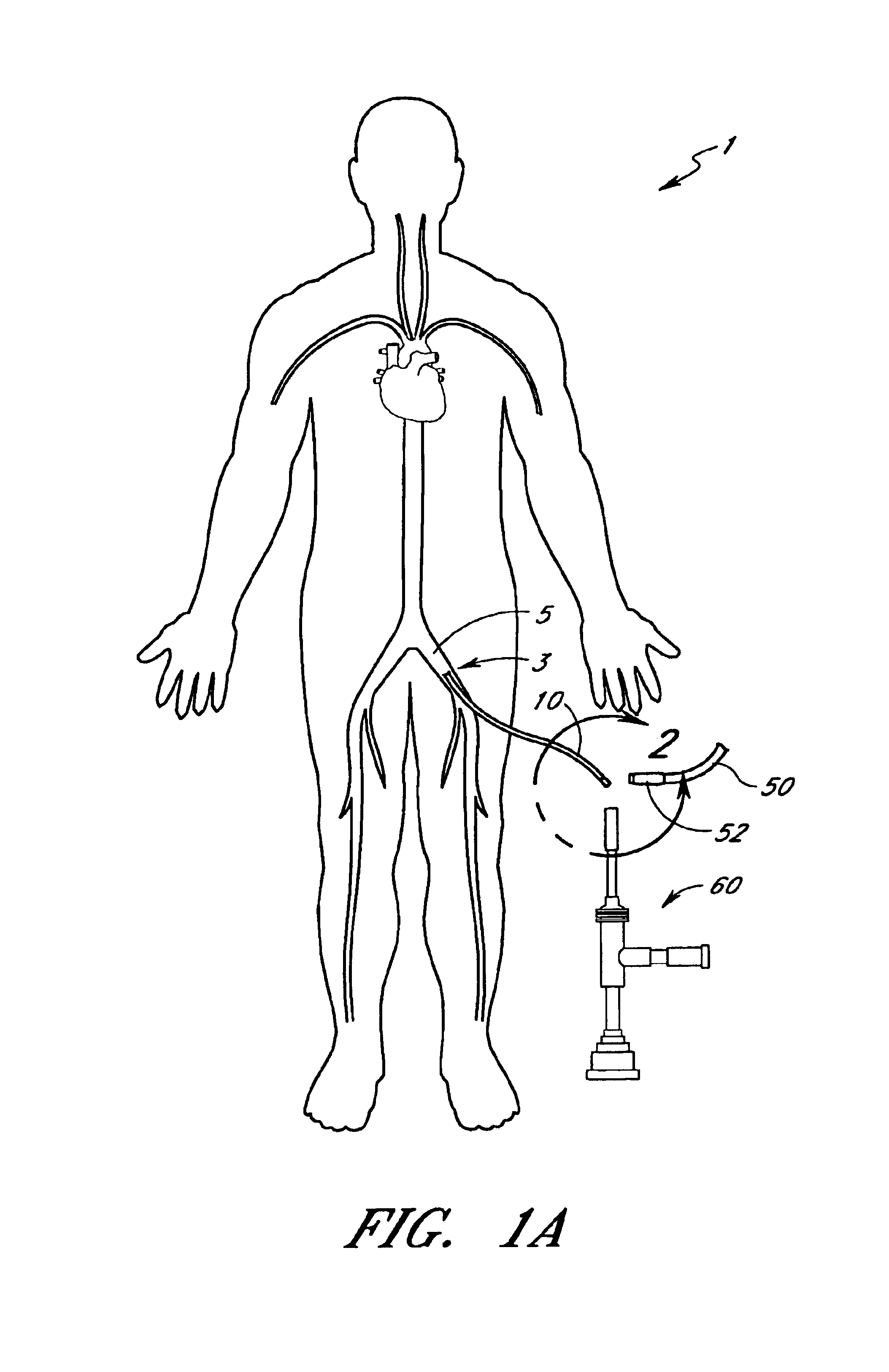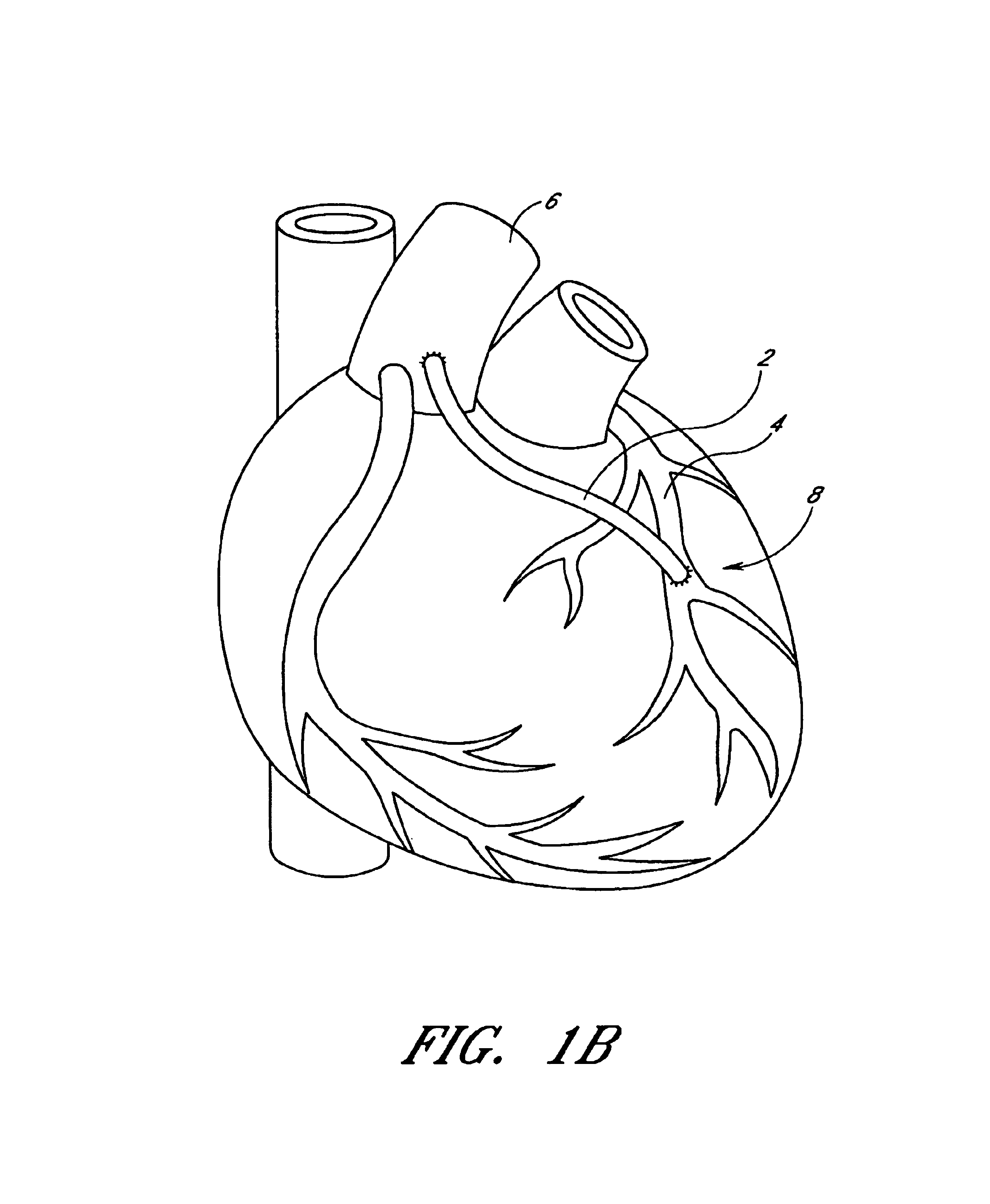Exchange method for emboli containment
a technology of emboli containment and exchange method, which is applied in the field of medical catheters, can solve the problems of many blood vessels where it is desirable to apply catheter treatment to be quite narrow, guidewire being displaced from its position, and cohen also does not address the problem of emboli containment, so as to reduce the time of occluded blood flow in the vessel, facilitate the exchange of catheters, and be safe deflated
- Summary
- Abstract
- Description
- Claims
- Application Information
AI Technical Summary
Benefits of technology
Problems solved by technology
Method used
Image
Examples
Embodiment Construction
I. Exchange Method During Emboli Containment
[0089]The method discussed herein allows for the rapid exchange of catheters during angioplasty and similar procedures. In particular, the preferred method of the present invention is adapted for use in the treatment and removal of an occlusion in a blood vessel in which the occlusion has a length and a width or thickness which at least partially occludes the vessel's lumen. Thus, the catheters of a preferred aspect of the present invention are effective in treating both partial and complete occlusions of the blood vessels. As used herein, “occlusion” includes both partial and complete occlusions, stenoses, emboli, thrombi, plaque and any other substance which at least partially occludes the vessel's lumen.
[0090]The method and apparatus of the present invention preferably can be used in any vessel of the body where the pressure is at least 0.2 psi at any stage of the heart pumping cycle, and more preferably, is about 1.2 psi, with a flow r...
PUM
 Login to View More
Login to View More Abstract
Description
Claims
Application Information
 Login to View More
Login to View More - R&D
- Intellectual Property
- Life Sciences
- Materials
- Tech Scout
- Unparalleled Data Quality
- Higher Quality Content
- 60% Fewer Hallucinations
Browse by: Latest US Patents, China's latest patents, Technical Efficacy Thesaurus, Application Domain, Technology Topic, Popular Technical Reports.
© 2025 PatSnap. All rights reserved.Legal|Privacy policy|Modern Slavery Act Transparency Statement|Sitemap|About US| Contact US: help@patsnap.com



